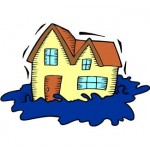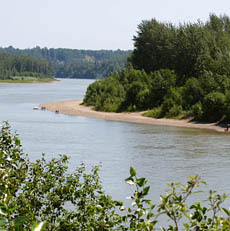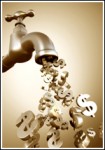 Testing Well Water Before Buying an Acreage
Testing Well Water Before Buying an Acreage
If you are thinking of buying an acreage in Parkland County near Spruce Grove, Stony Plain or Edmonton, or elsewhere in Alberta, you probably know that you’ll be responsible for your own water supply and sewage system. When you write an offer to purchase an acreage home, one of your Buyer’s Conditions will likely be a Water Condition, which will require the seller to prove that the acreage’s water is potable and free of bacteria. Your mortgage lender will also want to see this proof. How does the seller in the deal go about meeting this condition?
Luckily, for people in our area, DynaLifeDX (the medical lab located in the Queen St. Centre in Spruce Grove), will test the water for real estate purposes, and your REALTOR® can arrange for the testing. DynaLife supplies the container in which the specimen is collected, and processes it for a fee of $60. Please visit DynaLife’s Well Water Testing webpage for the details.
Living on an Acreage with a Well
If you are new to acreage living in our area, take a look at the Parkland County webpage on Water Systems to learn about how water can be accessed by acreage owners. As you’ll see, a well on your property is just one possibility.
My blog article of April 2011 entitled “Well Water Testing” notes how critical it is to maintain the health of the well on your acreage property. Today’s article updates and expands the information in that article.
The Provincial Government’s Role: Getting well water tested for real estate and mortgage purposes comes at a cost, is limited in scope and must be done by a private agency, as noted above, but testing of water for human consumption once you live on the property can be done for free by the provincial government and includes more in-depth analyses. It is currently recommended that bacteriological analyses be performed up to 4 times per year, and a chemical analysis every 2 to 5 years. For more details about this, please read Alberta Health Services helpful pamphlet “Frequently Asked Questions About Well Water Testing”. This pamphlet also lists the circumstances when testing will not be done by the province.
Testing for bacteria is done at the Provincial Laboratory of Public Health at the University of Alberta Hospital in Edmonton (Walter Mackenzie Health Sciences Centre, 8440-112 St, Edmonton AB T6G 2J2 – water testing done in the Environmental Microbiology Laboratory), and chemical analyses are done at the Centre for Toxicology at the University of Calgary (3030 Hospital Drive NW, Calgary AB T2N 4W4 – water testing done in the Environmental Waters Laboratory). ProvLab’s Guide to Services is a large publication detailing the many public health services they offer, with water sampling being one of them.
You don’t have to travel to either of ProvLab’s locations for this service. Spruce Grove’s Environmental Public Health Office is located in the Stan Woloshyn Building at 205 Diamond Avenue. Here, you can pick up special containers in which to collect your samples and drop them off. Hours of operation are weekdays 8:30 AM to 4:30 PM. BUT, note that drop-in service is not available so be sure to call them first at 780-342-1380.
Other information about water quality
Health Canada: What’s in Your Well? A Guide to Well Water Treatment and Maintenance (an excellent and concise article about well health)
Western Direct Insurance: Check Your Water Quality
Alberta Environment and Sustainable Resource Development: New online tool for water well owners
Environmental Public Health Field Manual for Private, Public and Communal Drinking Water Systems in Alberta (how to sample, how to interpret the results, how to design, construct, manage and maintain wells, dugouts and cisterns, water treatment, etc.)
Health Canada: Guidelines for Canadian Drinking Water Quality
Alberta Agriculture and Rural Development: Water Quality Testing
Looking to buy an acreage? Let me help! Call or text me at 780-910-9669, email me at barry@barryt.ca, or contact me here.









